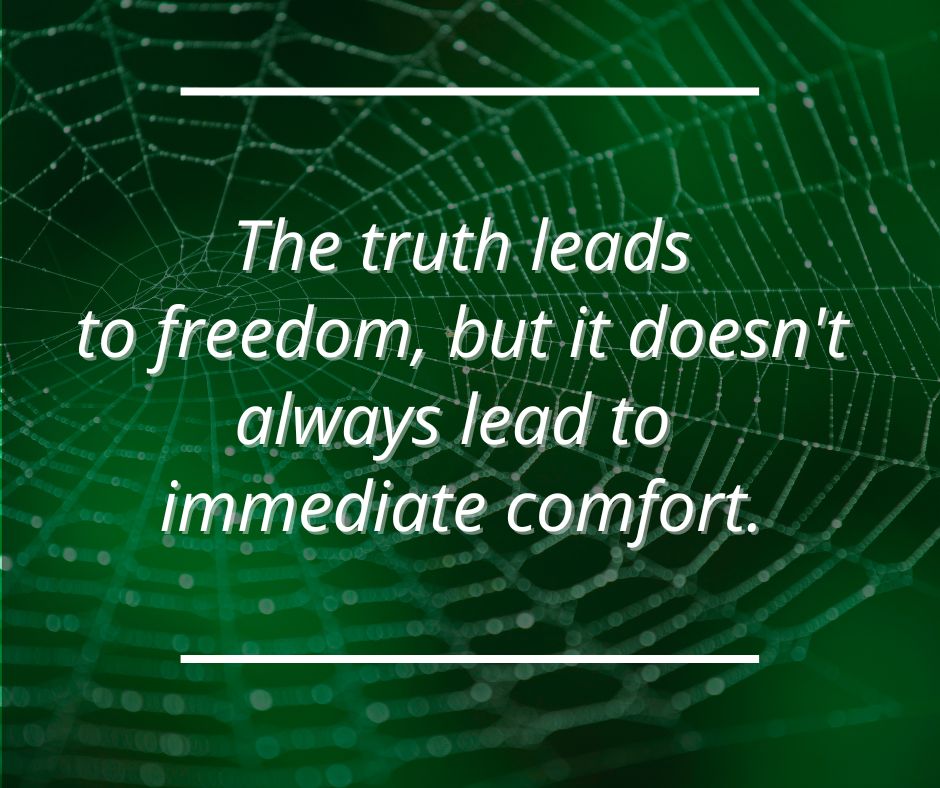Break Free for Good: Beyond Quick Fixes to Real Freedom (Part 3)Näide


Here are the first two steps in the three-step process to kill your spider:
Step 1: Confess the Lie
You have to state in writing or out loud: "This is the lie that I have believed." This step is rooted in James 5:16 NIV, where James says, "Therefore, confess your sins to one another and pray for one another, that you may be healed."
When you recognize your spider—the agreement you made with a lie—you confess: "I have believed this and it is a lie." You name it specifically. Why? Because that's the place where you need to be healed. When you confess that it's a lie, the prayer you pray in that place begins to gain power because God's work starts when you acknowledge the deception.
Scripture promises that confession is the beginning of healing. In 1 John 1:9 NIV, we read that “If we confess our sins, he is faithful and just and will forgive us our sins and purify us from all unrighteousness.”
You have to name the lie. This confession of truth will set you free, just as Jesus promised in John 8:32 NIV: "You will know the truth, and the truth will set you free."
Here's the fine print I’ve discovered firsthand: truth leads to freedom, but it doesn't always lead to immediate comfort. Your enemy will tell you that you can't confess because once you bring this into the light, things will get worse. After all, most lies live in darkness, and we're most vulnerable to lies when we're in darkness. Therefore, when we bring lies into the light, they lose power.
Andy Stanley says, "The consequences of concealment are far greater than the consequences of confession." Concealment is darkness; confession is light. When we confess that we've believed a lie, we're dragging it into the light where we can finally see the truth.
Step 2: Renounce and Reject the Lie
These two actions are similar but distinct. To renounce means to formally declare abandonment of something you once possessed. When you renounce the lie, you're breaking the agreement, saying, "I agreed with this, but I agree with it no longer."
To reject means to dismiss something as inadequate or no longer true. It's not enough to say, "I confess this was wrong." You must say, "I am breaking my agreement with it and dismissing it as untrue and inadequate."
Why both steps? Because we're fighting a spiritual battle. In 2 Corinthians 10:3-5 NIV, Paul writes that our weapons "have divine power to destroy strongholds.”
This explains why scripture emphasizes the importance of your thoughts and meditating on things that are true, praiseworthy, and right. In Romans 12:2 NIV, Paul calls us to transformation through “the renewing of our minds.”
Here's the crucial point: this isn't just a one-time event. The spider in your life may have been there for years. The lies your enemy tells you, he'll keep trying to tell you. Killing a spider is both a decision and a process. You'll have to renounce and reject the lie repeatedly.
You may always have a weakness in certain areas. Paul had a "thorn" that God refused to remove, and he dealt with it daily even while writing half the New Testament. You may need to renounce and reject specific lies daily for the rest of your life.
If you believe God has something great for you to do, a race to run, and a purpose for your life, then you must be willing to fight for it by confessing, renouncing, and rejecting the lies that would hold you back.
Tomorrow, we'll learn the final step: replacing lies with truth.
About this Plan

You've tried managing your problems, but they keep coming back. Pastor Scott Savage reveals the simple 3-step process to destroy the lies that have held you captive for years. Stop managing symptoms and start eradicating the source. This isn't about willpower—it's about God's power. Finally, experience the lasting freedom you've been searching for.
More
Related Plans

Faith-Driven Impact Investor: What the Bible Says

The Bible, Simplified

Resilience Reset

12 Days of Purpose

God’s Strengthening Word: Learning From Biblical Teachings

Multiply the Mission: Scaling Your Business for Kingdom Impact

The Meaning and the Method of True Rest

Seven Seeds for Flourishing

There's No Such Thing as a Nobody in God's Kingdom
